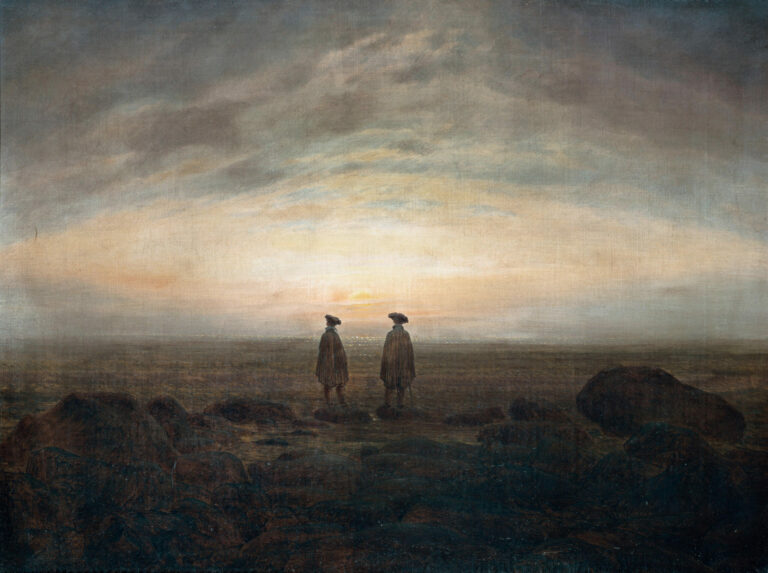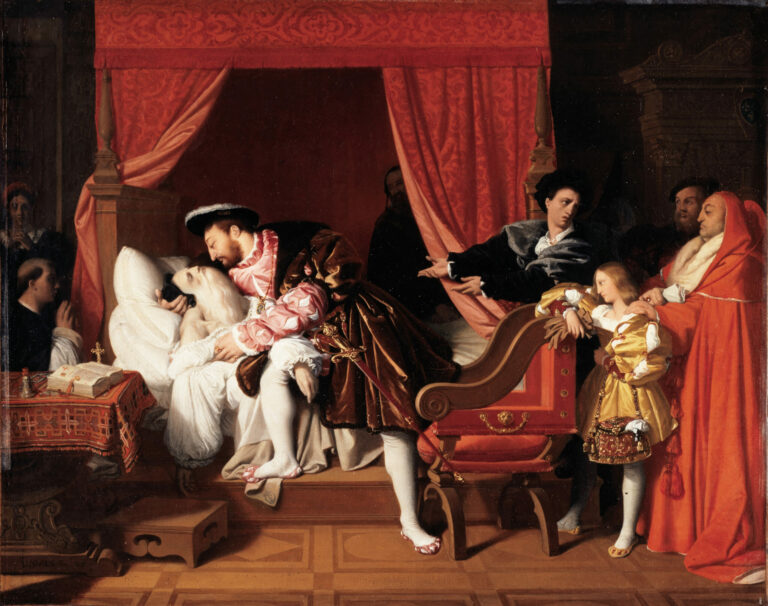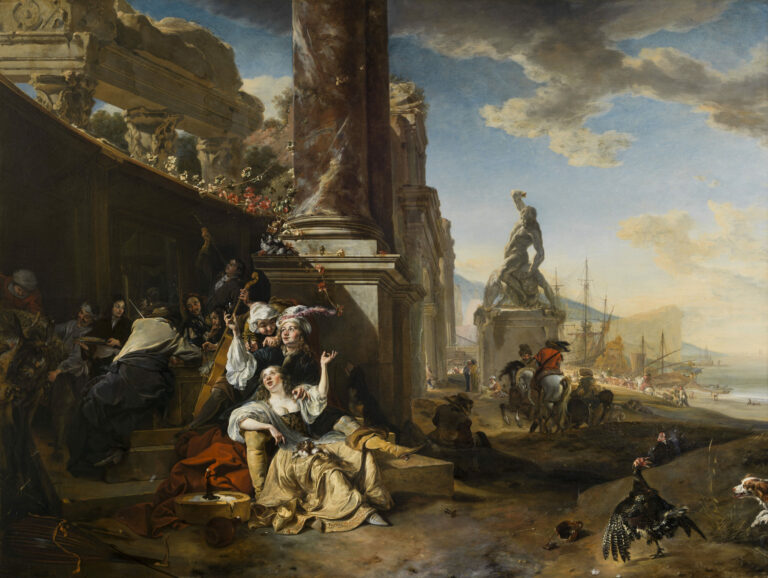
This oil painting demonstrates Henri Regnault’s early technical mastery in portraiture.
Composed within a traditional oval format, the work presents the artist in bust form, holding his maulstick—an essential tool for steadying the hand during precise detail work. The lighting masterfully sculpts the youthful face with its fine features and contemplative expression.
The curly hair, rendered through skillful impasto, contrasts with the smooth treatment of the flesh tones. The dark costume, likely a studio smock, unifies the composition while the maulstick serves as an attribute of the sitter’s profession. This work reflects academic training while revealing an emerging colorist sensibility. The careful execution and psychological depth of the gaze already announce the exceptional talent that would characterize the artist’s later production before his premature death.
Further informations
- Self-Portrait with a Maulstick, c. 1863, by Henri Regnault
- Oil on canvas
- 54 × 44.7 cm (21 1/4 × 17 5/8 in.)
- The Cleveland Museum of Art
- https://www.clevelandart.org/art/1980.279
Son of the renowned physicist Victor Regnault, Henri Regnault (1843-1871) embodied French artistic genius cut short in youth. Trained in Louis Lamothe’s studio and later under Alexandre Cabanel at the École des Beaux-Arts, he quickly developed a distinctive artistic personality that privileged color over line. Winner of the Prix de Rome in 1866 with “Thetis Bringing Achilles the Arms Forged by Vulcan,” he traveled to Italy and Spain, where he discovered Velázquez and developed his Orientalist palette.
Described by contemporary Arthur Fouques Duparc as generous and enthusiastic in temperament, an accomplished athlete and precocious draftsman, Regnault revolutionized history painting through his modern colorist approach. His meteoric career ended tragically at Buzenval in 1871 during the Franco-Prussian War, depriving French art of exceptional talent.
Exhibition “Henri Regnault (1843-1871), The Sword and the Brush”
An exhibition on Henri Regnault’s work is being held at the Musée des Avelines in Saint-Cloud, near Paris, until July 13, 2025.
Henri Regnault (1843-1871), an exceptional painter and heroic figure of the Second Empire, embodies the archetype of the romantic artist combining artistic genius with military courage. Winner of the Prix de Rome, he developed a brilliant style during his travels in Spain and Morocco, creating striking works that reveal his relentless quest for beauty and truth. A visionary, he dreamed of a house open to all creators – artists, poets, scholars – to foster intellectual and artistic exchanges. His loyal circle, notably including Alexandre Bida, Carolus-Duran, Georges Clairin, Benjamin-Constant and Marcello, shared this creative vision. Théophile Gautier described him as an “indomitable temperament” endowed with natural originality and the nature of a “painter of breeding.” His promising career was brutally cut short at the Battle of Montretout-Buzenval in January 1871, where he died as a hero, leaving behind a remarkable body of work that testifies to his exceptional talent and unparalleled passion for art and homeland.






